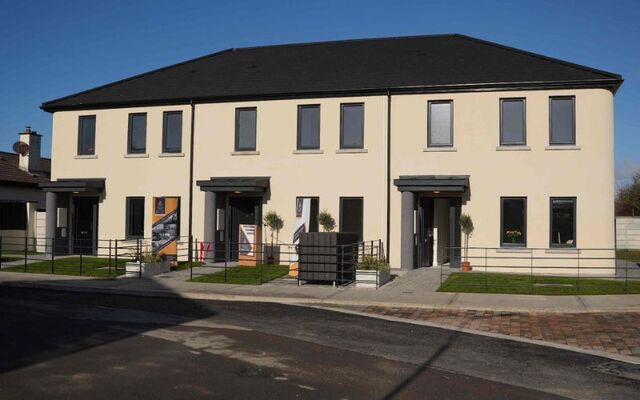Three families in Co Louth are set to move into 3D-printed homes, the first of their kind in Ireland.
The three-bedroom houses were built using construction printing technology, that automates the concrete laying process — with the 3D printer being built on a gantry that was programmed to pipe out concrete that was digitally pre-planned. The cavity walls were built without using concrete blocks from scratch.
The three homes, the first of their kind in Ireland and the UK, were built in Dundalk, Co Louth over a six-month period between May and November 2024.
🏠 On Wednesday, we officially launched the first residential housing development constructed using 3D Construction Technology, where three families were presented with the keys to their new homes.
Located at Grange Close, Dundalk, this innovative pilot project is the result of… pic.twitter.com/P3AxbK2tYQ
— Louth County Council (@louthcoco) February 6, 2025
The 3D printing was time and cost-effective, according to the developers — who said that the printed structure was built in 12 days, with a total machine on-site time of 18 working days; 60% faster than a traditional 44-day concrete block construction.
The total working days of the home were 132, 35% less than a traditional construction, which would take around 203 days. There was also a monetary cost of the home equalling €253,000 excluding VAT, which is around as much as traditional construction costs.
The three homes have a gross internal area of 110 sq m, and an A2 energy rating.
"At Harcourt Technologies we have successfully demonstrated the benefits of the technology in delivering a traditional and trusted concrete cavity wall construction, with remarkable efficiency – 60% faster than conventional methods and reducing the overall project delivery by 35%," a statement from HTL Managing Director Justin Kinsella said.
"Thanks to our partnership with Roadstone, we’re now positioned to scale up this solution across Ireland and help contribute to the much-needed supply of cost-effective, and sustainable housing throughout the country."
View this post on Instagram
The Louth and Meath Education and Training Board (LMETB) also helped with the construction in Grange Close, with them providing training and up-skilling to workers in the 3D construction printing technology.
"The Grange Close project is a testament to what can be achieved when forward-thinking ideas and collaborative efforts come together," LMETB Chief Executive Martin O’Brien said.
"We are proud to play a central role in delivering Ireland’s first 3D printed homes, which will provide much-needed social housing to families in Louth."
The construction of the homes was welcomed by Louth County Council, who added that they couldn’t have been completed without the work of all the collaborating organisations.
"The quality of the units and the impressive build duration are a testament to the successful collaboration between Louth County Council, HTL.tech, the LMETB, Roadstone Ltd and Harcourt Architects," Louth County Council CEO David Conway said.
"The provision of high-quality, sustainable housing remains a key objective for Louth County Council, and this project demonstrates how innovation and partnership can help us achieve that goal."
*This article was originally published on Extra.ie.




Comments